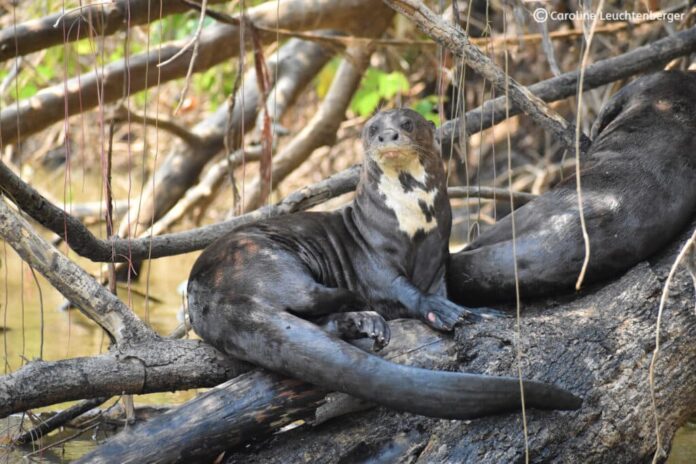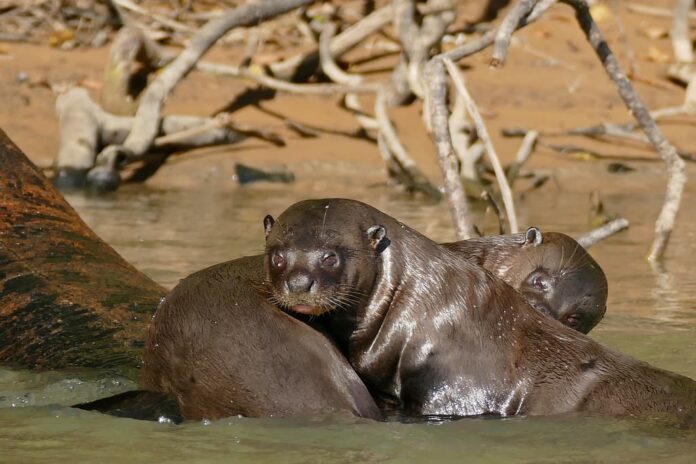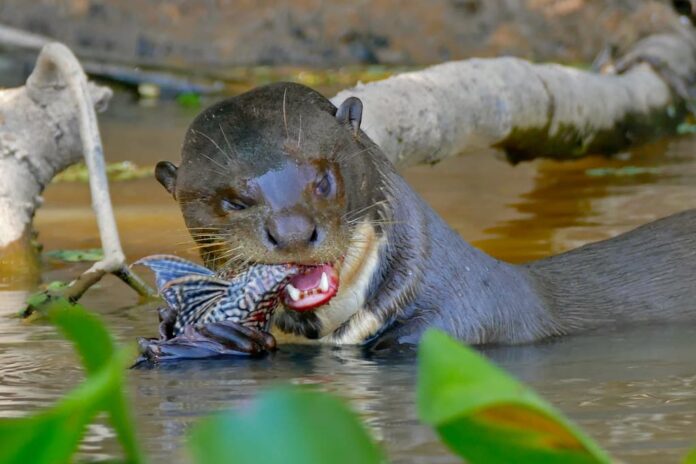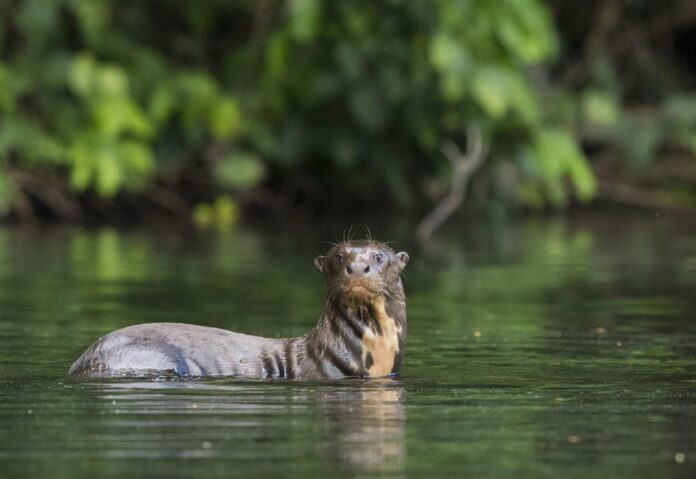Otters are known to be the cute and sweet animals, until they are as large as a giant otter. Looking the same but bigger, giant otters are still quite interesting animals with their appearance and behavior. Their number is not doing so well in the wild due to many threats. It is best to learn a thing or two about this beautiful creature, hoping they won’t be completely gone in the future.
1Appearance

A giant otter can reach a length of up to 1.8 meters, making them the largest otter species in the world. On average, males are 1.5 to 1.8 meters from head to tail, while females are 1 to 1.5 meters long. Its tail alone is around 70 centimeters, and it is very well-muscled, which helps in propelling itself while swimming. This tail also plays an important role when steering and turning as well. A giant otter has chocolate brown fur, but it can also be reddish or brown, and it appears nearly black when wet. It has the shortest fur of all otter species, but its fur is extremely dense. This fur is water repellent, and it keeps the otter dry and warm while it is swimming.
If you look at that face, you will see their long distinctive whiskers, and they are not just for show. These whiskers aid giant otters in detecting potential prey, especially in murky water, where they can feel for small potential prey. The legs of these otters are short and stubby, and the forefeet are shorter than the hind feet. Each foot has 5 toes and webbing that reaches the tips of the toes, with sharp non-retractable claws. Speaking of sharp, a giant otter also has razor-sharp teeth that make eating easy. A bite from one is not pleasant, and thankfully, they are not aggressive towards humans.
2Behavior

Giant otters are social animals, and they live in family groups with members from 3 to 10 or up to 20. The group is extremely cohesive and cooperative, and it is led by a dominant monogamous breeding pair. Each family member shares roles with each other, for example, juveniles help parents raise younger siblings. The parents teach the cubs swimming and hunting, and in a few months, little cubs can do everything by themselves. Younger members of the family usually groom and play with each other, and they take long naps together.
The large size comes with temper, and giant otters are very aggressive and territorial. More than that, they are also super noisy; the noisiest of all otter species. Encounters between rival groups often end in violent and noisy fights. Their aquatic life has gifted them with many cool abilities such as closing their ears and nose while underwater. Not to mention the acute hearing and excellent sense of smell, they are one ferocious hunter. Sometimes they hunt solitarily, but they also hunt in pairs and in groups. If it is a deep-water hunt, the family members will do it together.
3Feeding & Habitats

This otter species has a strong taste for fish, mainly catfish, characins, cichlids, and perches. Along with that, they also feed on crabs, crustaceans, small anacondas, small caimans, snakes, and turtles. Looking all cuddly and cute, there are some things that they don’t share, and that’s food. Giant otters do not share their food with the other members of the group despite hunting together. If one approaches another while it is enjoying its fish, there will be an intimidating growl that gets louder and louder.
This mustelid has a range across North-Central and South America, living along the Amazon River and the Pantanal. As amphibious animals, giant otters occur in freshwater rivers, rainforests, streams, swamps, and wetlands where food is abundant. They use areas beside the rivers to build campsites, dens, and latrines. Giant otters create dens by burrowing into riverbanks or under fallen logs. Living in the areas they choose allows them to easily access their food sources.
Humans poached them for their pelt, and they were almost extinct once in 1999. Now, their main threats are the effects of gold mining, habitat degradation, habitat loss, and mercury pollution. Conflicts with humans also contribute to their endangerment; fishermen see them as a nuisance. Local people sometimes take pups for the exotic pet trade or as pets for themselves. Their current population is estimated to be between 1,000 to 5,000 individuals in the wild at the moment. And that means they are endangered again, globally.
Related Post: Exotic Animals That Are Hunted For Fur




